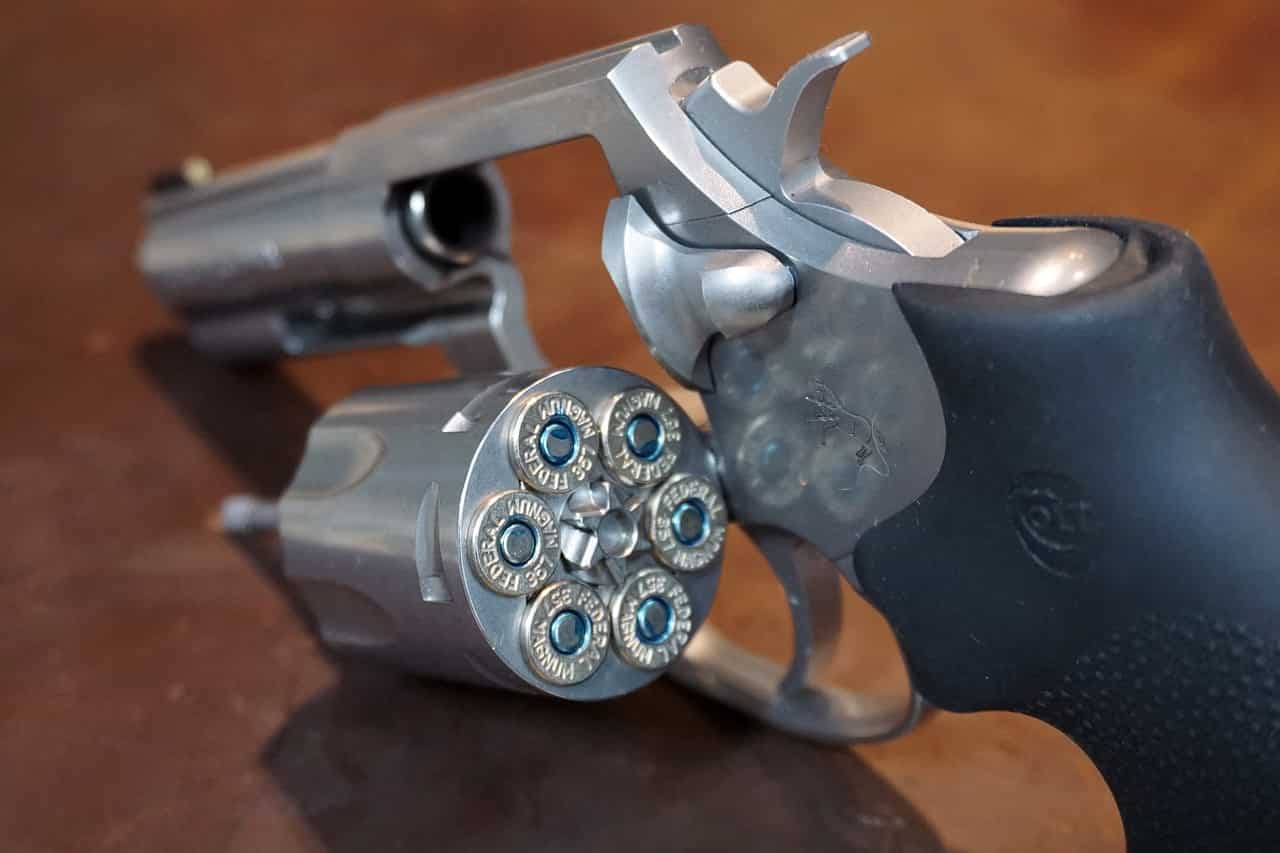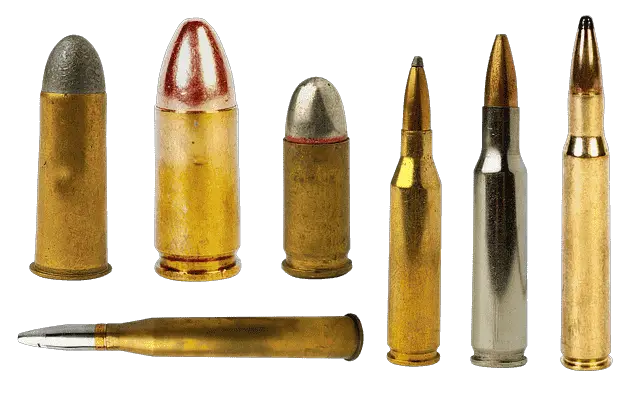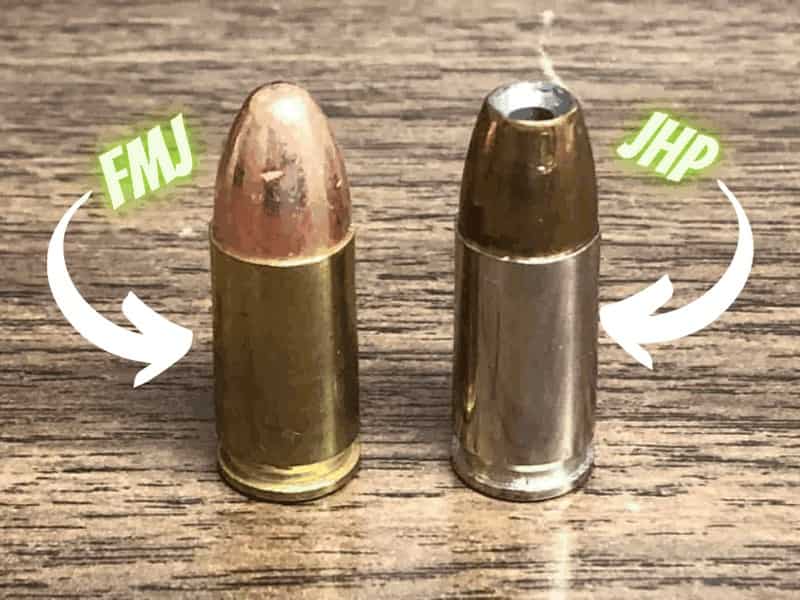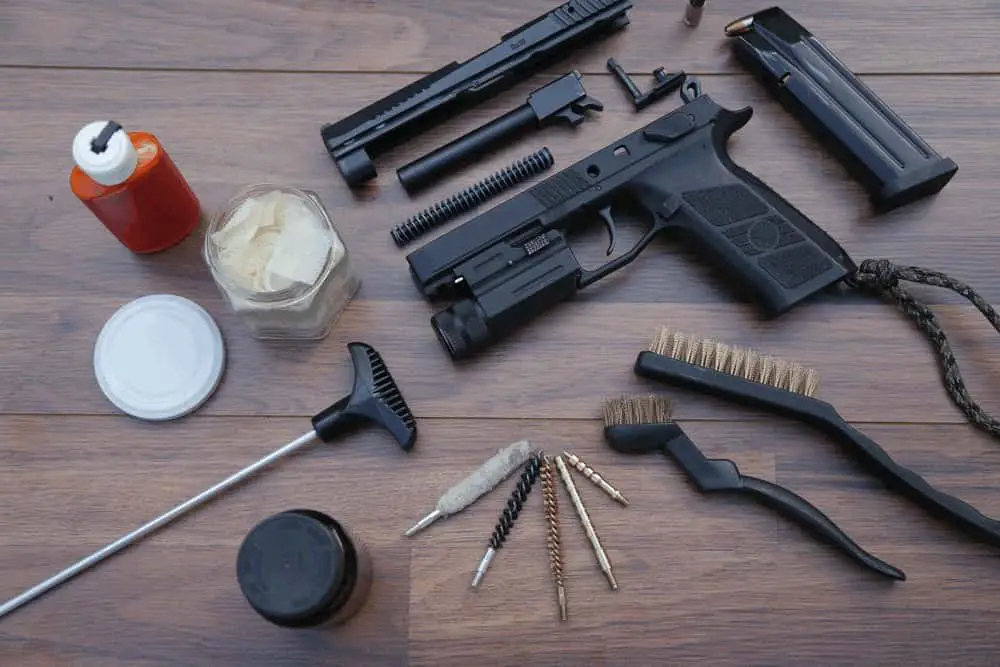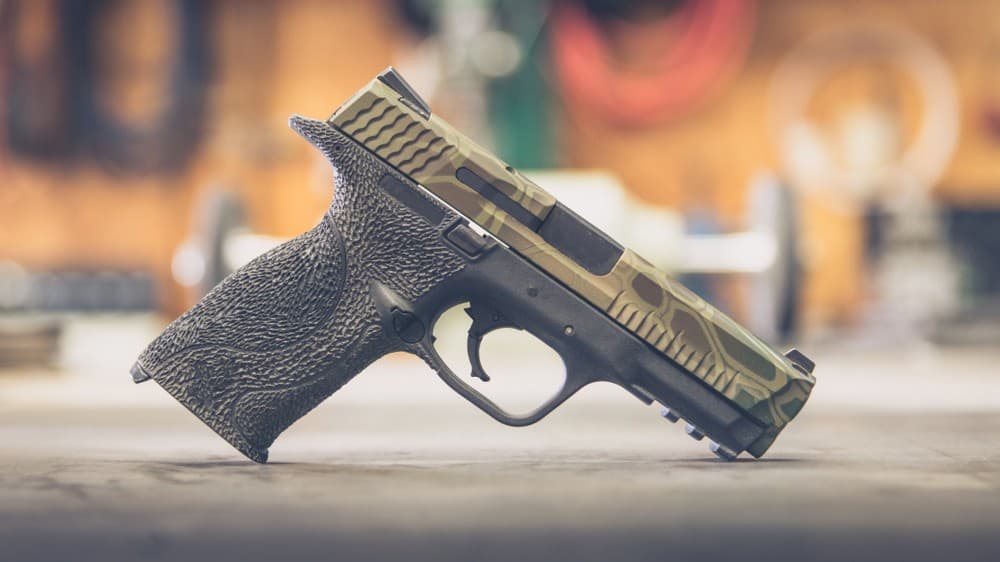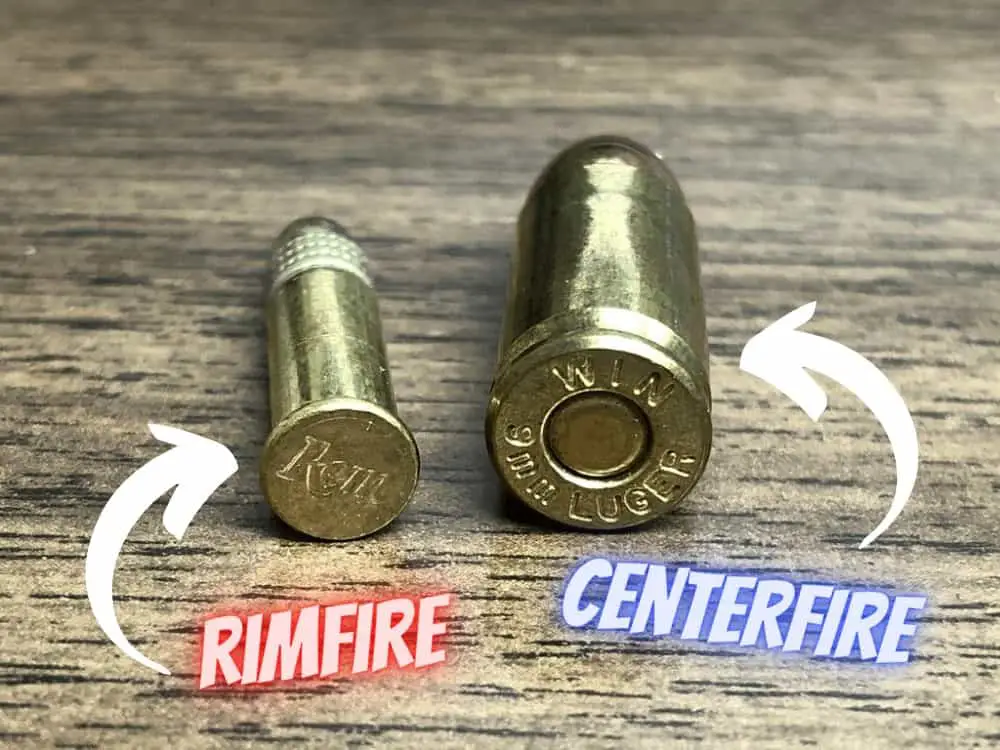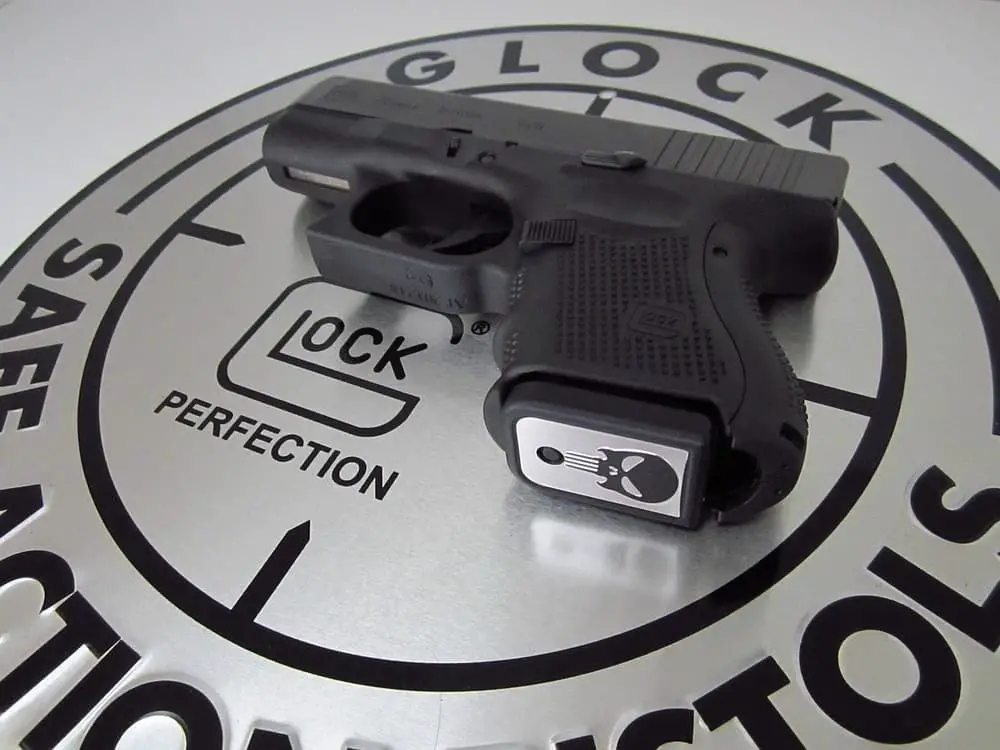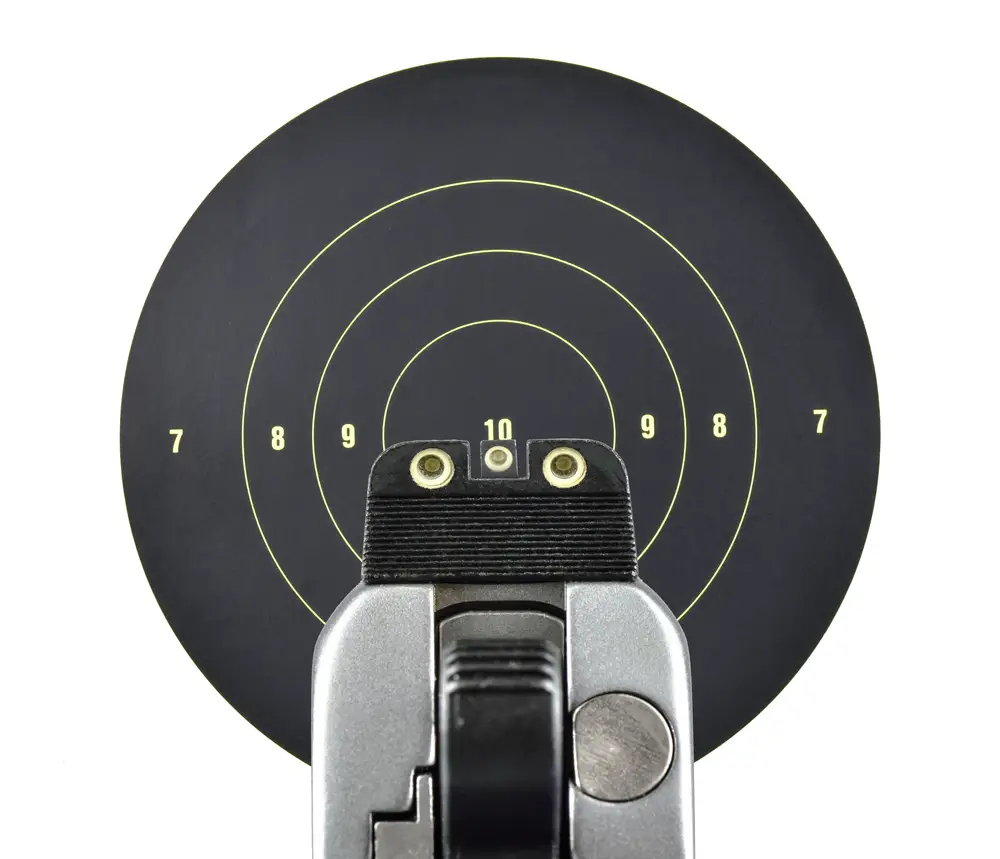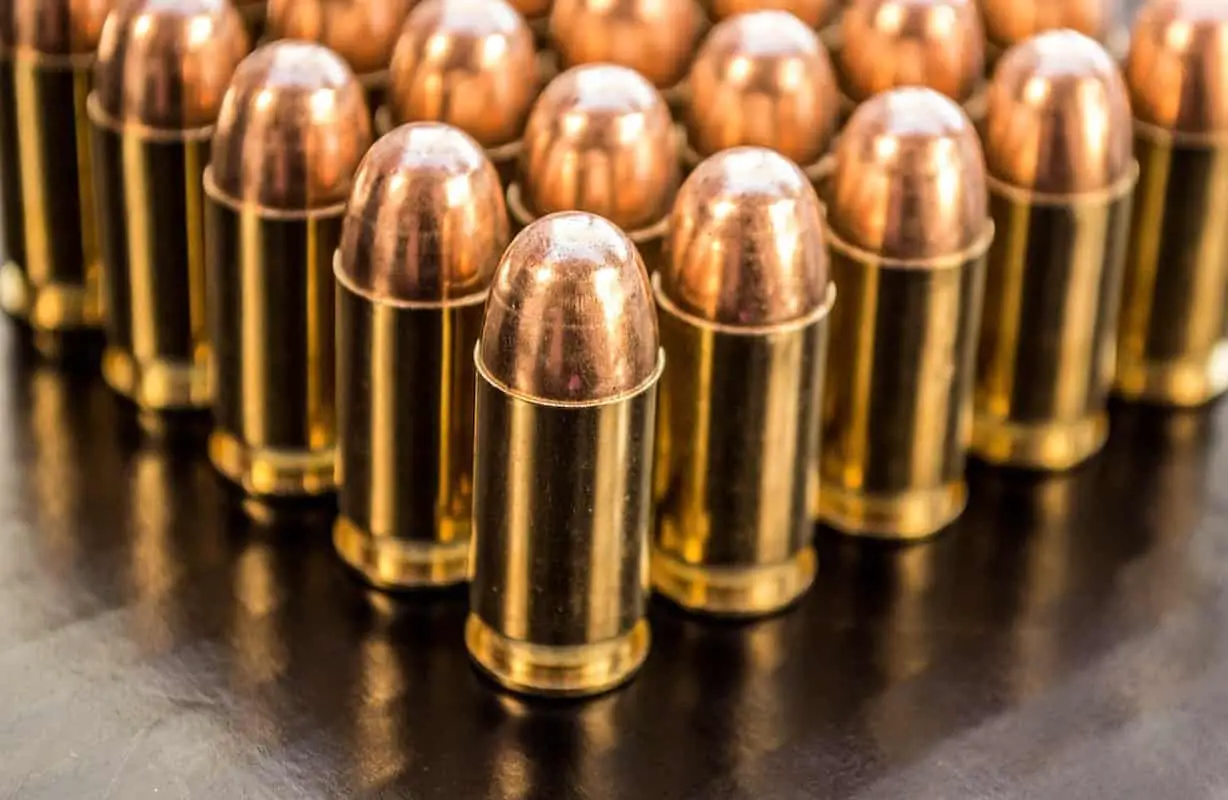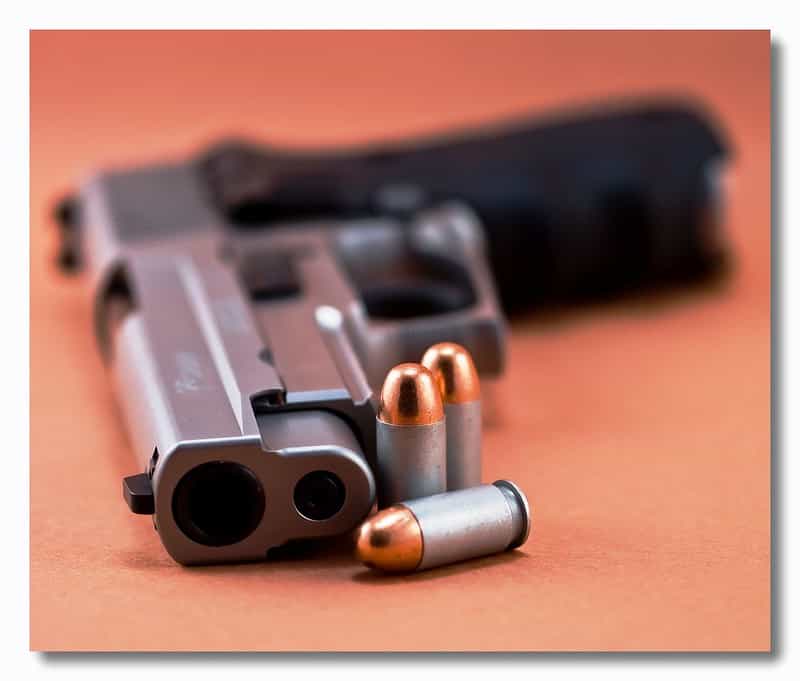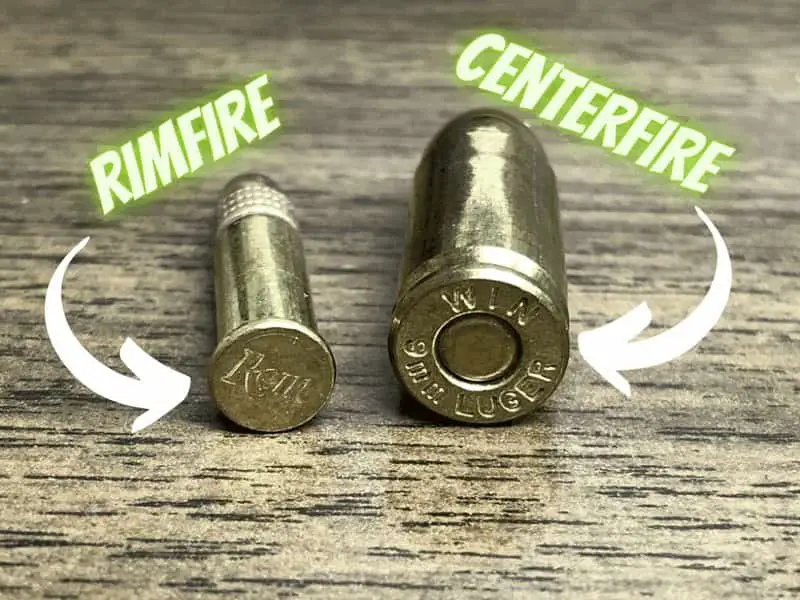
Rimfire vs Centerfire
Everyone has to start somewhere. If you’re new to guns, learning the difference between rimfire and centerfire ammunition is important.
Let me backtrack a moment. The first time I went out on the gun range, I had zero idea that there were different types of ammo for different types of weapons. All I knew at that point was that you put these little metal things in a gun and it makes it go pew pew. But there’s much more to it.
That said, learning about the various types of ammunition is important. Here’s what you need to know about the difference between rimfire and centerfire ammunition.
How a Gun Works – The Basics
Before we can talk about the difference between the two, we really need to go over basic mechanics of how a gun operates. If you weren’t already aware, the way shooting a gun works is that you pull the trigger and the firing pin inside the gun hits the primer, which creates a mini-explosion that ignites the gunpowder, sending the actual bullet itself forward out of the gun.
Why is it important to know this? The difference between rimfire and centerfire ammunition takes this chain of events into account, so it is highly important to remember as we continue on in this discussion.
The Difference Between Rimfire and Centerfire Ammo
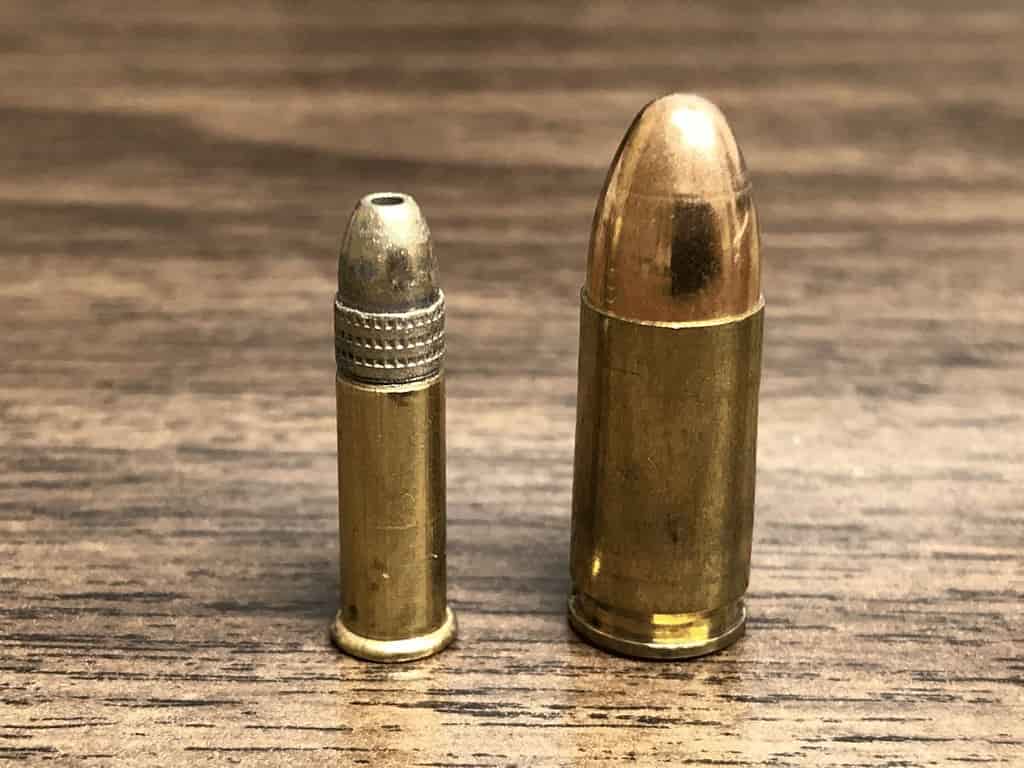
Now, there are two types of ammunition that you’ll come across: rimfire and centerfire. According to this simple description from Hunter Ed, centerfire ammunition is most commonly used in rifles, handguns, and shotguns. The primer in this type of ammunition is located in the center of the casing base. This is usually ideal because it creates a bigger explosion, making it easier to shoot larger sized bullets from the casing with much higher accuracy.
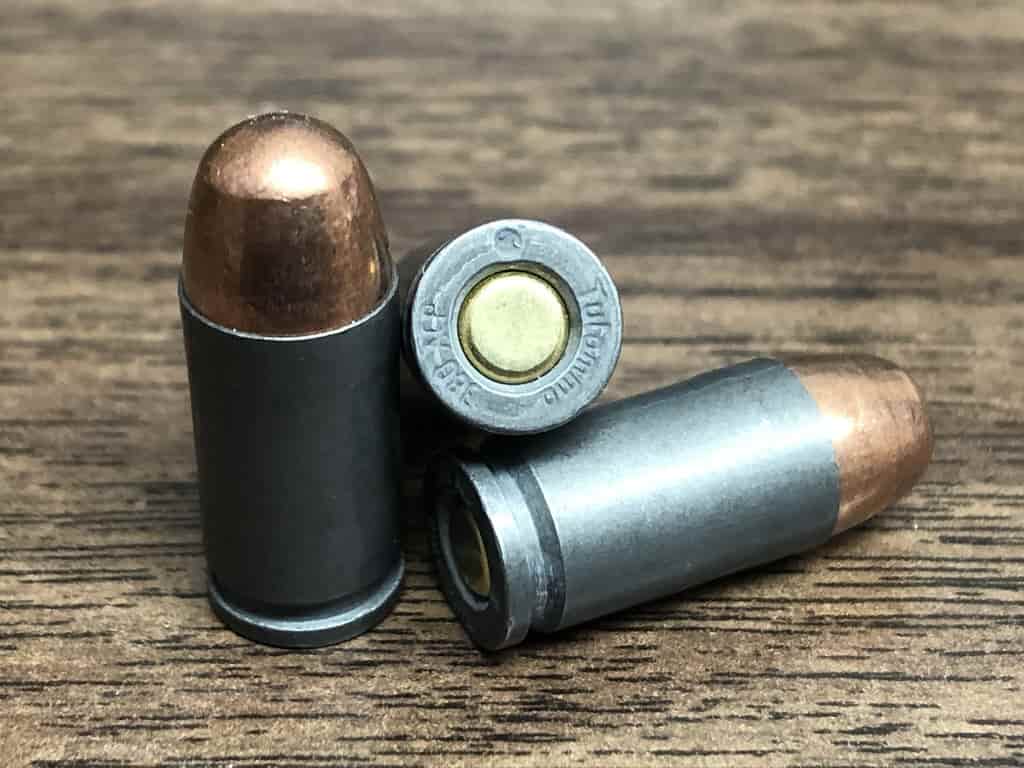
With rimfire ammunition, the primer is located in the rim of the shell casing. Some people prefer this type of ammo as it does not have the same level of recoil as the centerfire variety. For those who have a tendency to flinch in anticipation, this can be a better alternative.
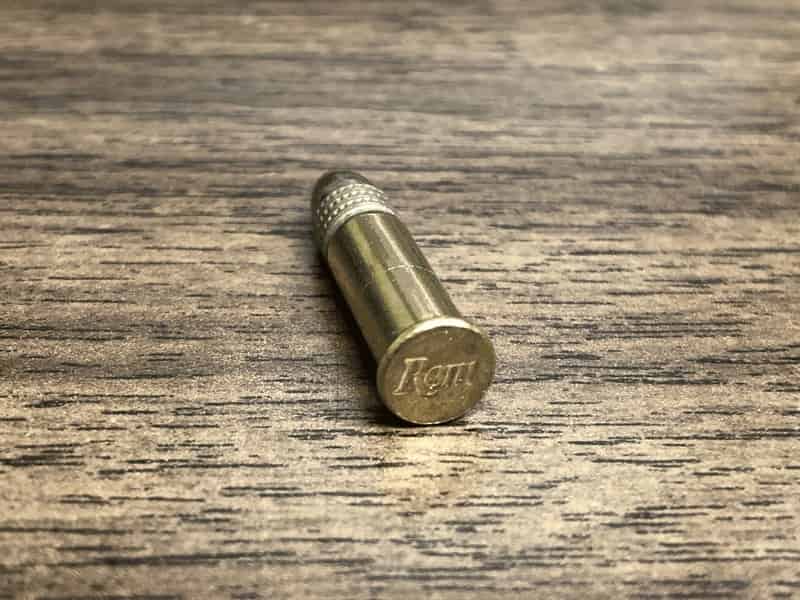
You can easily tell the difference between centerfire and rimfire by looking at the bottom of the casing. Centerfire will have a small circle in the middle, showing the location of the primer. (Hence the name.) In contrast, rimfire ammo will not have this circle.
What Calibers Are Rimfire and Centerfire?
Both rimfire and centerfire ammunition come in a wide range of calibers designed for use with various kinds of guns.
Rimfire ammo is available in numerous sizes, but the most popular varieties are the .22 Long Rifle and .22 Short.
There are many different calibers of centerfire ammo available on the market today. Most modern shotgun shells are centerfire and nearly all ammunition with the following calibers are considered centerfire:
- .38
- .357
- .45
- .44
- .223
- .308
- .270
Which Type of Ammunition Can Be Reloaded?
The only type of ammunition that can be reloaded is centerfire. Rimfire ammo creates too much of an explosive reaction during shooting, which can damage the outside case and make it less reliable. Thus, it cannot be reloaded.

Due to where the primer is placed in centerfire ammo, it can often be reloaded and used again. For avid hunting enthusiasts or those who like to go to the gun range fairly often, this is a benefit. Although centerfire ammunition is more expensive than rimfire, the reloaded ammunition is often less costly than new rounds making it easier to get more (pardon the pun) bang for your buck.
Are Rimfire and Centerfire Interchangeable?
While each type of ammo has a specific use, rimfire and centerfire ammo are not interchangeable. In fact, inserting one type into a weapon that isn’t designed to handle it is a good way to cause problems. And that’s assuming that you can even get it to fit.
Instead, make sure to read the manual of your gun to determine the type of ammo it takes. If no manual is available, such as in the case of older firearms, do a bit of research online. Most centerfire weapons were manufactured within the last hundred years, so if yours is older than that there is a chance that it might be rimfire.
Which Types of Ammo Are Better?
Really, the difference between rimfire and centerfire ammunition comes down to personal preference and the type of gun you already own.
However, if you’re looking to purchase a new gun and are trying to decide between the two types, centerfire is usually the preferred option. Not only does it hold up better to rough handling, such as in hunting or military applications, but it is less prone to manufacturer defects.
Pros and Cons – Rimfire vs. Centerfire Ammunition
Taking all of what you’ve just read into consideration, let’s take a look at some of the basic pros and cons of centerfire versus rimfire ammunition.
Pros – Centerfire Ammo
- Can be reloaded.
- Much more reliable.
- Most modern guns use this type of ammo.
- Higher velocity due to location of the primer.
Cons – Centerfire Ammo
- More expensive when purchased new.
- Not available for some older gun models.
Pros – Rimfire Ammo
- Lower in initial cost.
- Better for target practice or small game.
- Fits a lot of older or antique weapons.
- Less recoil.
Cons – Rimfire Ammo
- Cannot be reloaded.
- Much more prone to firing problems.
While the decision of which ammunition to use is ultimately up to you, this list of pros and cons should help you determine the difference between the two types and make a solid decision for yourself.
Have you ever thought about buying ammo online?
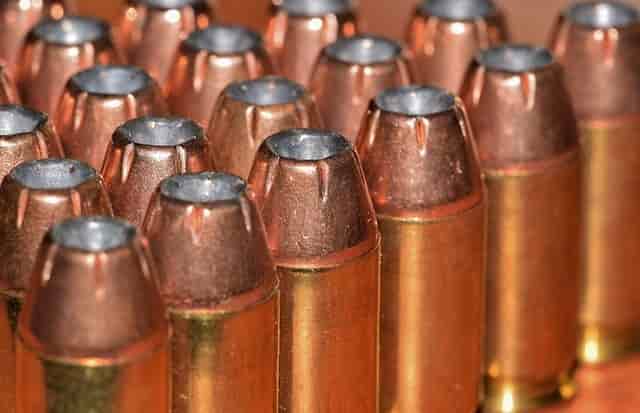
I’m telling you it’s so easy with Lucky Gunner! The ammo shown on their site is guaranteed to be in stock and will ship fast. I heartily endorse Lucky Gunner and so do their many customers.
“Okay, so far I’ve dealt twice with LuckyGunner, and all I can say is, I LOVE YOUR COMPANY!!!!
Imagine: only items in stock are advertised. Who’da thunk, eh? The more highly advertised ones – Cheaper Than Dirt, Cabela’s, et. al. – will put you on backorder forever and a day. But LuckyGunner – I ordered 500 shells of .45 ACP (hard to get in this “shortage”) – and there it was at my address. No backorders, no bull. Business as it should be.
Yes, I’m telling my friends! I’m constantly writing down your addy on bits of paper (and running out of the latter), spreading the joyous news, “No backorders! No bull! Try LuckyGunner.com, you won’t be sorry!” Thank you for being there for an ammo-starved public. And, thanks for the SUPERB customer service.”
— Walter J., Silverdale, WA —


Jason Huskey
Owner of CCWClasses.net
Jason Huskey is a family man with three kids and a wonderful wife. He’s always starting new hobbies, but his true passion lies in shooting sports. Jason has been a CCW license holder for over 10 years and carries every day. In addition to firearms, he also enjoys playing guitar and writing songs. He tries to live by the Christian values he believes in.
More things you might enjoy…
Can a 38 Special Shoot 357 Rounds?
Image by MikeGunner from Pixabay I’ve long since discovered that very few activities give me the same thrill and sense of security as firing a gun. As a gun owner and enthusiast, I’ve always been curious about which guns can shoot which kinds of ammunition. I have a Derringer five-shot revolver that uses .22 rounds.…
Who Makes the Most Popular Brands of Ammo
If you are here to figure out who makes Herter’s ammo just look below the following table for a more thorough answer. If you are looking for a specific type of ammo, then you need to start by figuring out who makes it. There are lots of options for ammunition and each type of bullet…
What Does Full Metal Jacket Mean?
If you have heard the term full metal jacket, then you might be wondering what this means. I know that growing up, I heard this term a lot. I dismissed it as some sort of saying or cliche. Eventually, I decided that I needed to figure out what people meant when they use this term.…
How Often Should You Clean Your Gun?
After purchasing a firearm, you might wonder how often you should clean your gun. The truth is that it largely depends on how often you use it and where you live. Keep reading to learn more. How Often Should You Clean Your Gun? The short answer: do a light cleaning after every shooting session and…
How Should You Hold a Handgun for Maximum Accuracy?
Whether it’s for sport or you find yourself in a defensive situation where you need to use a handgun, how you hold it will significantly affect your accuracy. Developing your handgun techniques will help you become a better shot and keep you safe. Read on to learn the answer to the question: How should you…
Continue Reading How Should You Hold a Handgun for Maximum Accuracy?
What Is Stippling On A Gun?
Hey, would you like a more firm grip on your gun? Would that help you shoot better? Well that is what stippling is for. Stippling is a modification to the grip that makes it, well, more grippy. It is done by sanding off the original finish and then using a hot soldering iron to make…
What Is A Centerfire Pistol?
To answer the question: “What Is A Centerfire Pistol?”, you must first understand that there are two main types of ammunition: Centerfire Rimfire These ammo categorizations are based on where the firing pin hits the back of the bullet to make it fire. A centerfire pistol is one where the firing pin strikes the center…
Is It Bad To Dry Fire A Glock?
There are loads of myths and assumptions surrounding handguns. If you grew up around guns, you probably heard some of these myths. Today, we will answer the question: Is it bad to dry fire a Glock. The Quick Answer Dry firing modern centerfire guns is completely fine (this includes most Glocks). The firing pin does…
What Is The Sight Picture?
When you first became interested in shooting you probably heard the terms sight picture and sight alignment being thrown around. Most people tend to use the two terms interchangeably; however, they do not mean the same thing. In this guide, I will make a clear distinction between sight picture and sight alignment. To master any new trade, you must…
What is Ball Ammo
When you hear the term “ball ammo” you may be picturing an actual ball. While the term did originate from ball shaped ammo, that’s not what it means today. Most ball ammo today is cylindrical in shape. It will have a lead core coated with copper. Keep reading to learn all about the history and…
What is ACP Ammo?
So much of our gun culture today was influenced or actually designed by a legend named John Browning. To understand where ACP Ammo came from we have to understand a little bit about this man. I’ll go into more detail about John Browning in a second but let’s answer the main question first, “What is…
